Heating, Ventilation, and Air Conditioning (HVAC) systems are crucial for maintaining comfortable indoor environments. A key component of these systems is the piping that transports fluids—be it hot water, chilled water, or refrigerants. This blog will explore HVAC piping in detail, including types, materials, design considerations, and installation techniques.
1. What is HVAC Piping?
HVAC piping, or heating ventilation and air-conditioning piping, delivers hot water, cool water, refrigerant, condensate, steam, and gas to and from the HVAC components. These systems are vital for distributing conditioned air, heating, and cooling different areas effectively. HVAC systems provide thermal comfort for the occupants, accompanied by indoor air quality.
2. Importance of HVAC Piping
HVAC pipe systems are used in industrial, commercial, residential, and institutional buildings for different purposes, like
- To add or remove heat from the air inside the building.
- Control the humidity.
- Filter the air in the building.
- Bring fresh air into the building.
So, for this process, HVAC piping systems use chilled water, hot water, condensate water, condensate drainage, refrigerant, steam, and gas to deliver from HVAC equipment using piping networks. Using HVAC piping in HVAC systems is highly efficient and affordable.
3. Cooling and Heating System of HVAC Piping
The cooling system consists of chilled water and condensate water. Chilled water systems pump water in a closed loop and never get mixed with other condensate water. Heat is absorbed and passed off at three main points in the chilled water systems. The first point is the fan coil unit located throughout the buildings. The next one is the chiller, which uses a refrigerator to cool the chilled water and act as a heat exchanger, and the next one is the condensate water system acting as an open loop, that exposes the water to the atmosphere at the cooling towers.
The heating system, which is capable of adding heat to the occupied space, adds up both the steam system and the hot water system. Which uses a boiler to produce the steam, usually fired up by natural gas or fuel oil. Boiler pressure is used to force the steam through the piping system to a heat exchanger. Inside the heat exchanger, the heat is transferred into the hot water and is carried to the occupied space. Steam traps are used to collect the condensate after the steam has given off its heat and allowed it to condense back to a liquid state. Condensate pumps are used to pump the condensed water back to the boiler to proceed again. The next one is the hot water system, which is also a closed-loop system. Which gets its heat from the heat exchanger and is pumped into the spaces within the buildings which are to be heated. These cooling and heating piping networks are collectively called HVAC piping systems.
4. Types of HVAC Piping Systems
The HVAC piping system can be classified into two parts; the piping in the central plant equipment room and the delivery piping. The central plant equipment room consists of the pipe networks connected to the rotating equipment and tanks. They are connected to different types of equipment like heat exchangers and pumps over the pump room. From these regions, the piping network transports the process liquid to the other parts of the building using the delivery piping. Again, they can be classified as follows:
4.1 Hot Water Piping
Hot water piping is used in hydronic heating systems where water is heated and circulated to provide warmth. Key considerations include:
- Pipe Materials: Common materials include copper, PEX (cross-linked polyethylene), and steel.
- Insulation: Insulating hot water pipes prevents heat loss and improves system efficiency.
4.2 Chilled Water Piping
Chilled water piping is used in air conditioning systems to transport chilled water from chillers to air handling units. Important aspects include:
- Pipe Size: Proper sizing is critical for maintaining desired flow rates and efficiency.
- Temperature Control: Maintaining chilled water temperature is vital for system performance.
4.3 Refrigerant Piping
Refrigerant piping is used in refrigeration and air conditioning systems. Key considerations include:
- Type of Refrigerant: Different refrigerants require specific types of piping and connections.
- Pressure Ratings: Refrigerant lines must be rated for the pressures they will encounter.
4.4 Ventilation Piping
Ventilation piping, often referred to as ducting, facilitates the movement of air in HVAC systems. While technically not piping, understanding its role is crucial for a complete picture. Considerations include:
- Material Types: Galvanized steel, aluminum, and flexible duct materials are common.
- Airflow Efficiency: Proper sizing and sealing are critical for minimizing energy loss.
Fig. 1 below shows a typical air duct piping.

5. HVAC Piping Materials
The effectiveness of the piping is influenced by the materials used to make it. Copper and steel are the two major types of metals used for HVAC piping.
- Copper is used mostly for smaller piping, transporting water in AC units with a maximum commercial size of about 12 “as the use of copper is more expensive than that of other materials available. So the piping used in HVAC is 3 “and smaller.
- Steel, on the other hand, is much cheaper and is used for large sizes. It can also withstand higher pressure than copper and is ideal for both hot and cold water. It usually allows for a range of temperatures and pressures. Sch 40 and Sch 80 pipes of the same are acceptable for several HVAC applications.
For chilled and heating water services 8” and above, ASTM A53 or A135 (light wall black steel pipe) are used.
ASTM A120 and A53 (black steel pipe Sch. 40) are used up for services like
- Chilled and heated water piping
- Miscellaneous drains and overflows
- Emergency generator exhaust
- Safety and relief valve discharge
- Chemical treatments
- High- and low-pressure steam
- Steam vent
ASTM 120 and A53 Sch. 80 (black steel pipe) are used for pumped and gravity steam condensate return.
ASTM A120 Sch. 40 (galvanized steel pipe) can be used up for miscellaneous indirect wastewater pipes.
ASTM B88 (copper pipe) used for,
- Industrial cold water (above grade-type L) for piping 4 “and smaller.
- Refrigerant piping (type L, hand-drawn) below 6“
- Chilled and heating water (type L and hand-drawn) below 3”.
Underground pipes need to have cathodic protection to prevent corrosion from dirt. Which is coating it in a thin layer of some other metal, such as zinc, to absorb the corrosion. The flanges used are per ANSI B16.1. Cast iron or steel is used for screwed pipe and forged steel welding necks are used for welded line sizes.
Plastic piping, which is much cheaper than copper and steel, is another common material used for HVAC applications. They are thinner and weaker and won’t be able to withstand much pressure. It doesn’t get corroded, which makes it suitable for underground uses. PVC and CPVC are the two types of plastic piping commonly used. They won’t be able to withstand a wide range of temperatures as metal.
6. HVAC Piping Insulation
Depending upon the existing code conditions, they may or may not be insulated. Usually, they are insulated with closed-cell elastomeric foam pipe insulations due to their closed-cell structure and built-in vapor barrier. They range from -297°F to +220°F HVAC pipe services.
There are also different types of insulation, like mineral fiber insulation (glass fibers bonded with thermosetting resin), which includes
- Preformed pipe insulation (comply with ASTM C547)
- Blanket insulation (ASTM C553)
- Fire-resistant adhesive
- Vapor retarder mastics
- Mineral fiber insulating cement (ASTM C195)
Prefabricated thermal insulating fitting covers (ASTM C450) and elastomeric cellular thermal insulations (ASTM C 534).
Buried HVAC piping parts are wrapped in accordance with AWWA C209 and C214.
The minimum thickness of the insulation can be determined using the following equation:

Here,
- T = minimum insulation thickness (inches).
- r = actual outside radius of pipe (inches).
- t = insulation thickness specified in Fig. 2 below for applicable fluid temperature and pipe size.
- K = Conductivity of alternate material at mean rating temperature indicated for the applicable fluid temperature (Btu × in/h × ft2 × °F).
- k = the upper value of the conductivity range specified in Table 606.4 for the applicable fluid temperature.

7. HVAC Piping Design Considerations
7.1 HVAC System Load Calculation
Accurate load calculations are essential for determining the appropriate pipe size and type. Factors to consider include:
- Building size and orientation
- Insulation levels
- Local climate conditions
7.2 Pipe Sizing
Pipe size affects flow rates and pressure loss. The following guidelines should be considered:
- Hydronic Systems: Follow the recommended guidelines for water flow and pipe size.
- Refrigerant Lines: Use manufacturer specifications for proper sizing.
7.3 Layout and Routing
Proper routing minimizes bends and obstacles, reducing pressure loss and improving efficiency. Considerations include:
- Avoiding sharp turns and excessive lengths
- Ensuring accessibility for maintenance
7.4 Insulation Requirements
Insulating pipes is critical for energy efficiency. Key factors include:
- Hot Water Pipes: Insulation thickness should prevent heat loss.
- Chilled Water Pipes: Insulation prevents condensation and energy loss.
8. Analyzing HVAC Piping Systems
Analysis of the system includes checking the piping system for its compliance with code requirements in stresses under different loading conditions. Operating conditions will be design temperature, ambient temperature, operating temperature, design pressure, and hydro test pressure. Materials required are selected accordingly as per the process parameters. Sometimes, expansion compensators are used to accommodate the expansion and contraction of the HVAC piping network.
In these cases, mostly ASME B31.9 (utility service piping) is used, sometimes B31.3 and B31.4 for underground piping.
Verifying the displacement and loads on supports in the overall systems. Usually, the plastic piping will have more displacements due to its elastic properties. Quality assurance must also be made sure. The piping material and installation shall meet the requirements of the local building codes and service utility requirements.
9. Support Spacing of HVAC Piping System
The usual support span for horizontal HVAC piping systems is provided in the table below:
| Pipe Size | Maximum Support Spacing | Common Hanger Diameter if supported using Rigid hangers |
| 1/2 to 1-1/4 inches (12.7 to 31.75 mm) | 6 feet 6 inches (2 m) | 3/8 inch (9.5 mm) |
| 1-1/2 to 2 inches (38.1 to 50.8 mm) | 10 feet (3 m) | 3/8 inch (9.5 mm) |
| 2-1/2 to 3 inches (63.5 to 76.2 mm) | 10 feet (3 m) | 1/2 inch (12.7 mm) |
| 4 to 6 inches (101.6 to 152.4 mm) | 10 feet (3 m) | 5/8 inch (15.9 mm) |
| 8 to 12 inches (203.2 to 304.8 mm) | 14 feet (4.25 m) | 7/8 inch (22.2 mm) |
| 14 inch (355.6 mm) and over | 20 feet (6 m) | 1 inch (25 mm) |
| PVC (All sizes) | 6 feet (1.8 m) | 3/8 inch (9.5 mm) |
| C.I. Bell and Spigot (or No-Hub) | 5 feet (1.5 m) at joints | 3/8 inch (9.5 mm) |
Horizontal Cast iron HVAC pipes are supported adjacent to each hub, with 5 feet (1.5 m) maximum spacing between supports/hangers. Vertical HVAC pipes are generally supported on every floor. Vertical cast iron pipes are supported at each hub.
10. Joining HVAC Piping
Usually, the following guidelines are followed for joining HVAC piping during installation:
- HVAC piping systems are joined using the method suggested by the manufacturer in accordance with applicable codes and standards.
- For copper HVAC piping Soldered joints are used.
- For steel HVAC piping, Screwed, Flanged, or Welded joints are used.
11. Installation of HVAC Piping System
11.1 Pre-Installation Planning
Before installation, careful planning is essential:
- Blueprint Review: Ensure all piping plans align with the HVAC layout.
- Material Inventory: Confirm all materials and tools are on-site.
11.2 Pipe Supports and Hangers
Proper support is vital for preventing sagging and ensuring structural integrity:
- Support Spacing: Follow manufacturer guidelines for spacing of hangers.
- Material Selection: Choose hangers that can withstand the system’s weight and conditions.
11.3 Joining Techniques
Different materials require specific joining techniques:
- Copper: Use soldering or brazing.
- PEX: Utilize crimp or clamp fittings.
- Steel: Use threaded or welded connections.
11.4 Testing and Commissioning
After installation, testing ensures the system operates correctly:
- Pressure Testing: Check for leaks and ensure system integrity.
- Flow Testing: Verify that flow rates meet design specifications.
12. HVAC Piping Standards
HVAC piping standards are established guidelines that ensure the safety, efficiency, and reliability of piping systems in heating, ventilation, and air conditioning applications. These standards cover various aspects of piping, including materials, design, installation, testing, and maintenance. Below are some key HVAC piping standards:
12.1 ASHRAE Standards
- ASHRAE 15: This standard outlines safety requirements for refrigeration systems, including guidelines for refrigerant piping and system design.
- ASHRAE 90.1: It provides minimum requirements for energy-efficient design in buildings, affecting HVAC system design and piping efficiency.
12.2 International Plumbing Code (IPC)
- This code provides guidelines for the installation and maintenance of plumbing systems, including those that may interface with HVAC systems, particularly in hydronic heating and cooling applications.
12.3 National Fire Protection Association (NFPA)
- NFPA 54: This standard governs the installation of gas piping systems, ensuring safety in HVAC systems that use gas as a fuel source.
- NFPA 90A: This standard covers the installation of air conditioning and ventilating systems to reduce fire risks.
12.4 ANSI/ASME Standards
- ANSI A13.1 or ASME A13.1 is recommended for identifying piping systems in industrial, commercial, and institutional settings, as well as in buildings designed for public assembly.
- ASME B31.5 provides guidelines for “Refrigeration Piping and Heat Transfer Components.
- ASME B31.9 provides guidelines for “Building Services Piping.”
13. HVAC Piping Specification
HVAC piping specifications detail the materials, dimensions, installation procedures, and performance requirements for piping used in heating, ventilation, and air conditioning systems. These specifications ensure the safe, efficient, and reliable operation of HVAC systems. In general, the HVAC Piping specification provides the following information:
- Piping Material Details
- Fitting and Valves
- Pipe sizing
- Insulation Requirements
- Support Requirements
- Testing and Commissioning Requirements
- Maintenance Considerations
- Documentation and Compliance Requirements
A well-defined HVAC piping specification ensures that systems operate efficiently and safely. It serves as a crucial reference for designers, installers, and maintenance personnel, facilitating proper installation and compliance with industry standards.
14. HVAC Piping Frequently Asked Questions with Answers
What is HVAC piping made of?
HVAC piping is usually made of Steel, Copper, or PVC. For smaller pipes, Copper is used. In general, copper as an HVAC piping material is selected for lines below 3 inches.
What type of pipe tubing is most common in the HVAC industry?
The most widely used HVAC pipe tubing is made up of copper. They are widely used in both refrigerant and heating systems. However, recently, PEX tubing is replacing copper tubing in cold and hot water applications.
What is a two-pipe HVAC system?
A two-pipe HVAC system is a cost-effective HVAC piping solution that uses the same piping system alternately for chilled water cooling and hot water heating.
What type of pipe is used for chilled water?
For chilled water piping systems, steel pipe is the most widely used material.
What type of copper pipe is used for HVAC?
Type L copper pipe, which is available in rigid as well as flexible forms, is used in HVAC piping systems.


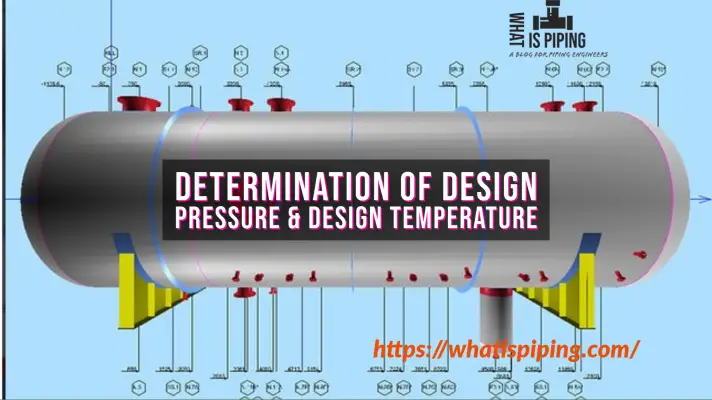
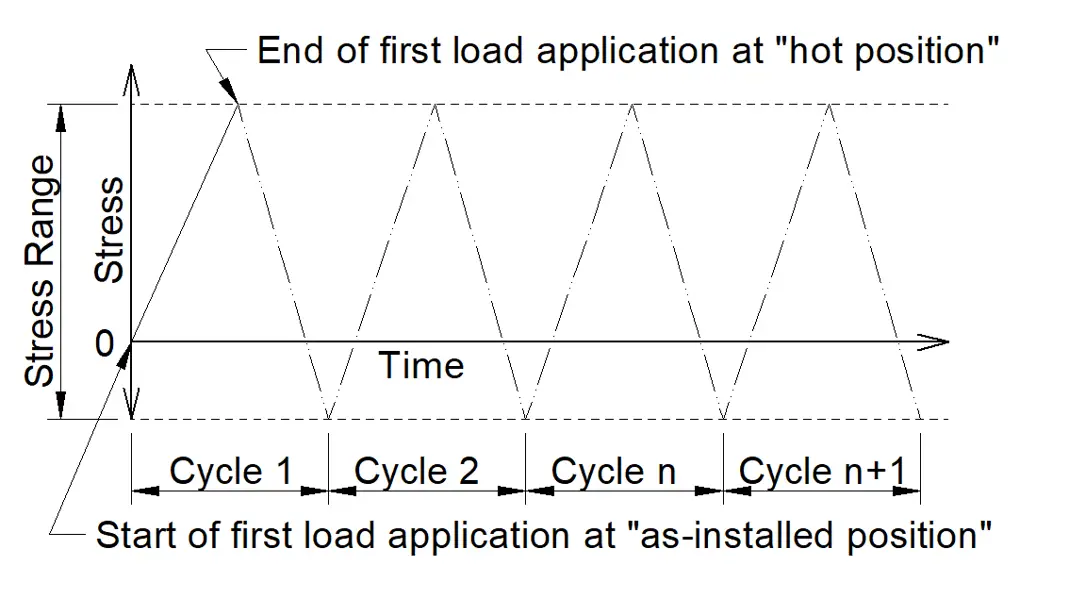
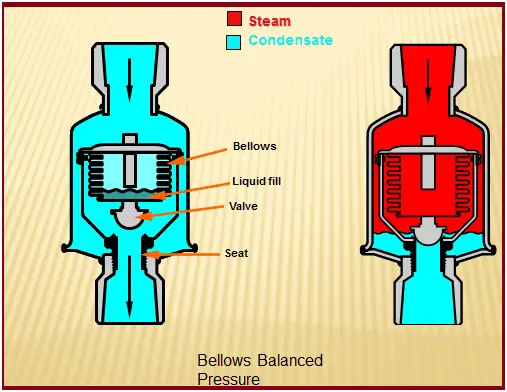
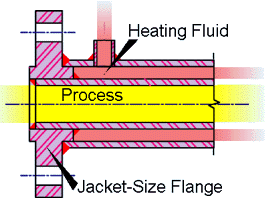
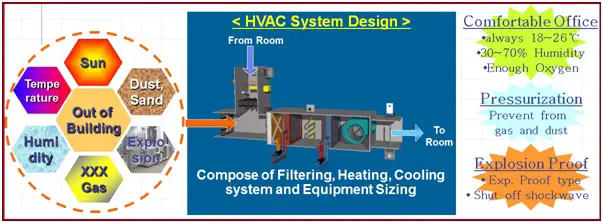

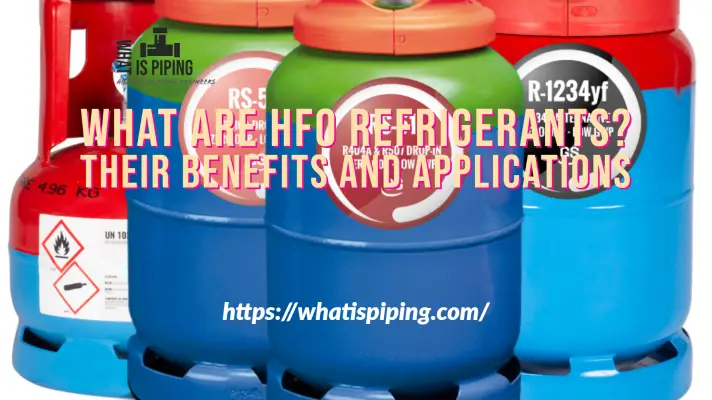
Thanks for posting this blog and its really very helpful information.
Thanks for Sharing this article: Its Amazing
I like that you mentioned that filtering the air is also one of the key functions of an HVAC unit. I’d like to know more about residential heating services because I plan to rent an office one of these days. Getting heating in their will surely help in making me more comfortable when working long hours.
https://www.dandrservicesinc.com/sturgis
This information it’s very helpful and important for me…
Great article to read, all the tips are great….
Thank you for explaining to us that HVAC piping is used to deliver hot water, cool water, refrigerant, condensate, steam, and gas to and from various components within the HVAC system.